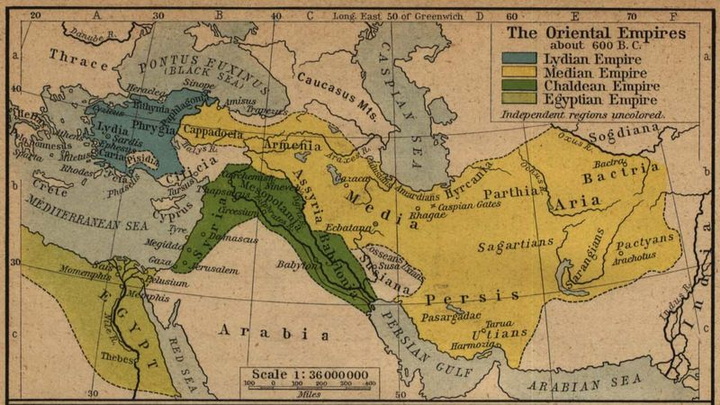
Recent archaeological studies indicate that as early as 10,000 BC, people lived on the southern shores of the Caspian, one of the few regions of the world which according to scientists escaped the Ice Age. They were probably the first men in the history of mankind to engage in agriculture and animal husbandry. Historical and urban settlements date back to 4000 BC.
Though the history of Iran is long and complex, its shape is determined by the rise and fall of successive dynasties – with intervals of chaos and confusion. The Persian Empire, the Medes, the Assyrian Kingdom, the Macedonians, the Huns, the Sassanians, the Arabs, the Seljuks and Mongols, the Timurids and the Safavids, all held sway here at one time or another.
The Medes unified Iran into a kingdom in 625 BC. They were succeeded by three Iranian dynasties, the Achaemenids, Parthians and Sassanids, which governed Iran for more than 1000 years. In the 6th century BC Cyrus the Great founded the Persian Empire, which was destroyed in 330 BC by Alexander the Great. In succeeding centuries, Persia was invaded by the Parthians, the Arabs, the Mongols and various Turkish dynasties. Persia continued to be overrun by foreign powers for another thousand years. The Seljuk Turks arrived in the 11th century, followed by the Mongols under Genghis Khan and his grandson Hulagu Khan in the 13th century and Tamerlane (Timur) in the 14th century. Another Turkish dynasty, the Safavids, took control in the 16th century, only to be ousted by yet another Turkish tribe, the Qajar, in the 18th century.
The Safavids belonged to a Sufi religious order and made Shiite Islam the official religion of Iran, (replacing Zoroastrianism), undertaking a major conversion campaign of Iranian Muslims. The Safavid dynasty reached its height during the reign of Shah Abbas 1st (1587-I629). It was during his reign that Persia once again came to be known in Europe as a superpower, because it was the greatest opponent of the Ottomans, and their wars saved Europe, the Ottomans being too occupied on the east fighting Iran to make headway in the west.

In 18th-19th centuries Iran fall under the increasing pressure of European nations, particularly the Russian Empire and the Great Britain. The discovery of oil in early 1900s intensified the rivalry of the Great Britain and Russia for power over the nation. After the World War 1st Iran was admitted to the League of Nations as an original member. In 1921 Reza Khan, an army officer, established a military dictatorship. He was subsequently elected hereditary Shah, thus ending the Qajar dynasty and founding the new Pahlavi dynasty.
In 1963 Iran’s most important religious nation-wide uprising led by Ayatollah Khomeini, took place in protest to the so-called White Revolution.
Iran had been a monarchy ruled by a Shah, or emperor, almost without interruption from 1501 until the 1979 Iranian Revolution, when Iran officially became an Islamic republic on 1 April 1979.
After the victory of the Islamic Revolution of 1979 the shah was overthrown and Iran, officially
